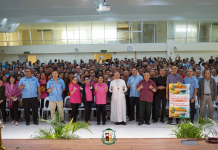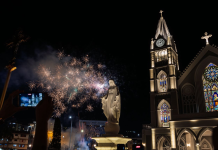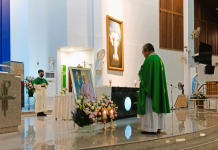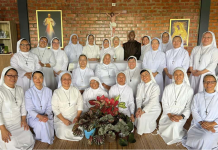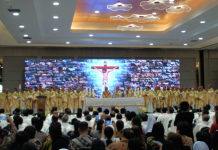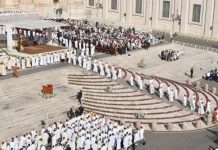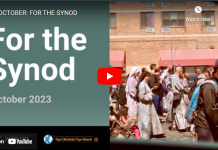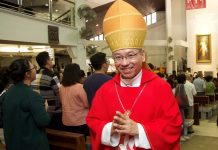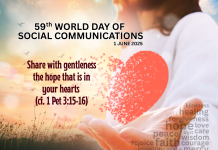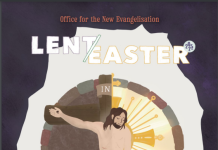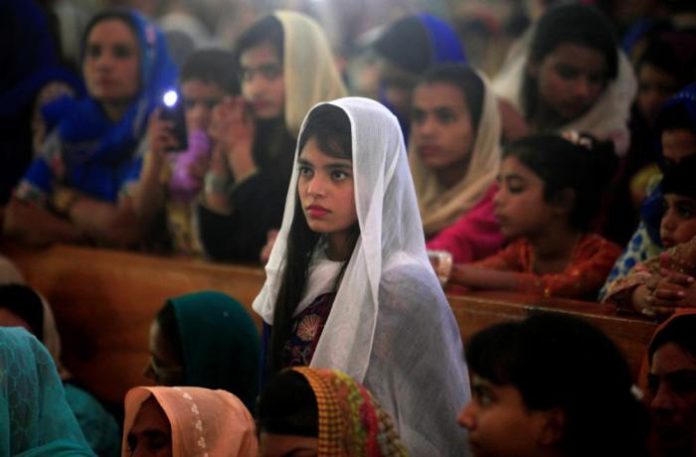By Bernardo Cervellera
ROME — At the end of March, on the occasion of the Day of Remembrance for Missionary Martyrs, I was invited to Monfalcone. In the presence of the bishop, Msgr. Carlo Roberto Maria Redaelli, I gave a very intriguing lecture: “Persecuted Christians, Christians of hope. Evangelizing the world from a minority ”.
The priests who invited me, Fr Flavio and Don Paolo, had suggested this title to emphasize that Italy is also a Country of mission and the Church is now a “minority” . As such it needs to learn from the Churches-minorities of Asia. In fact, looking at the frequency of Sunday Masses in Italy, especially in the big cities, beyond laudable exceptions, we realize that the people of God who participate in the liturgy are increasingly few, the young are almost absent and you can count new faces on the fingers of one hand.
What comes to mind is what someone calls “the prophecy about the future of the Church” outlined by Joseph Ratzinger in an interview with German Radio in 1969, in full post-conciliar crisis. In it, the priest who would become Benedict XVI states that “from the present crisis a Church will emerge that will have lost a lot. It will become small and will have to start more or less from the beginning. It will no longer be able to inhabit many of the buildings it built during prosperous times. As the number of its faithful diminishes, it will also lose many social privileges”.
To counter this fate, two different forms of clericalism were pursued in the West: the traditionalist and the progressive. The first can be described as an attempt not to mix with the world, rather to fight it in every way to “defend the faith”, taking refuge in the forms of the past, in the mass in Latin as an absolute, in rich and solemn vestments.
The other mixed so much with the world, that is to say the things of the world, pandering to the whims of trends in rights and the dominant opinion, living the liturgy as “a celebration of community” (and not the mystery of Christ), forgetting the novelty that Christ himself came to bring to the world.
In both cases, mission is closed within a pattern that forgets the dynamic identity of the Church: it is founded by Christ, which makes it different from the world, but also that it lives the same trajectory as Christ, which is the to be consumed for the salvation of the world.
Visiting the Churches of Asia and presenting them on AsiaNews we realize that they are almost always “minorities”: most of them do not exceed 2% of the population to which they belong – with some exceptions like the Philippines, Korea, Hong Kong Kong, Vietnam, East Timor – yet the Churches of Asia – according to data from the 2018 Statistical Yearbook of the Church – grow by 11% every year.
They cannot hope to one day become a “majority”: in most of the countries in which they live there are strict rules against conversions and heavy limits to religious freedom, so much so that some of them are persecuted and gift dozens of martyrs every year.
From this point of view, what Pope Francis said to the Church of Morocco on his last journey (March 30-31) is true: “For Jesus did not choose us and send us forth to become more numerous!!” But he also said that “the problem is not when we are few in number, but when we are insignificant,”.
The Christians of Asia are full of meaning: the encounter with Jesus makes them joyful, freer from fears and spirit, strong in dignity and freedom without comparison compared to the cultural prisons of ethnicity, caste, or clan from which they come. They do not need to proselytize to increase the number of the faithful, to structure who knows what pastoral plans: their humanity renewed by faith is sufficient to attract their neighbors, colleagues at work, schoolmates to desire an encounter with Christ. And even if they suffer persecution and martyrdom, for them the death of the martyr is like a seed that fell on the ground, and produces great fruit because they believe in the death and resurrection of Jesus, in theirs and in that of their Church. Happy Easter.

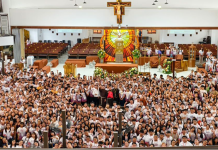
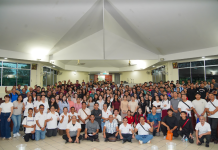
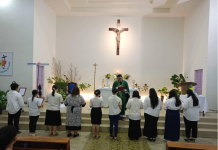

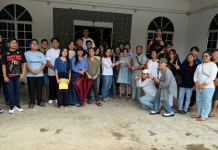


,团长(右三),以及小军友们。(图:刘谊恒(Moses)-218x150.png)
